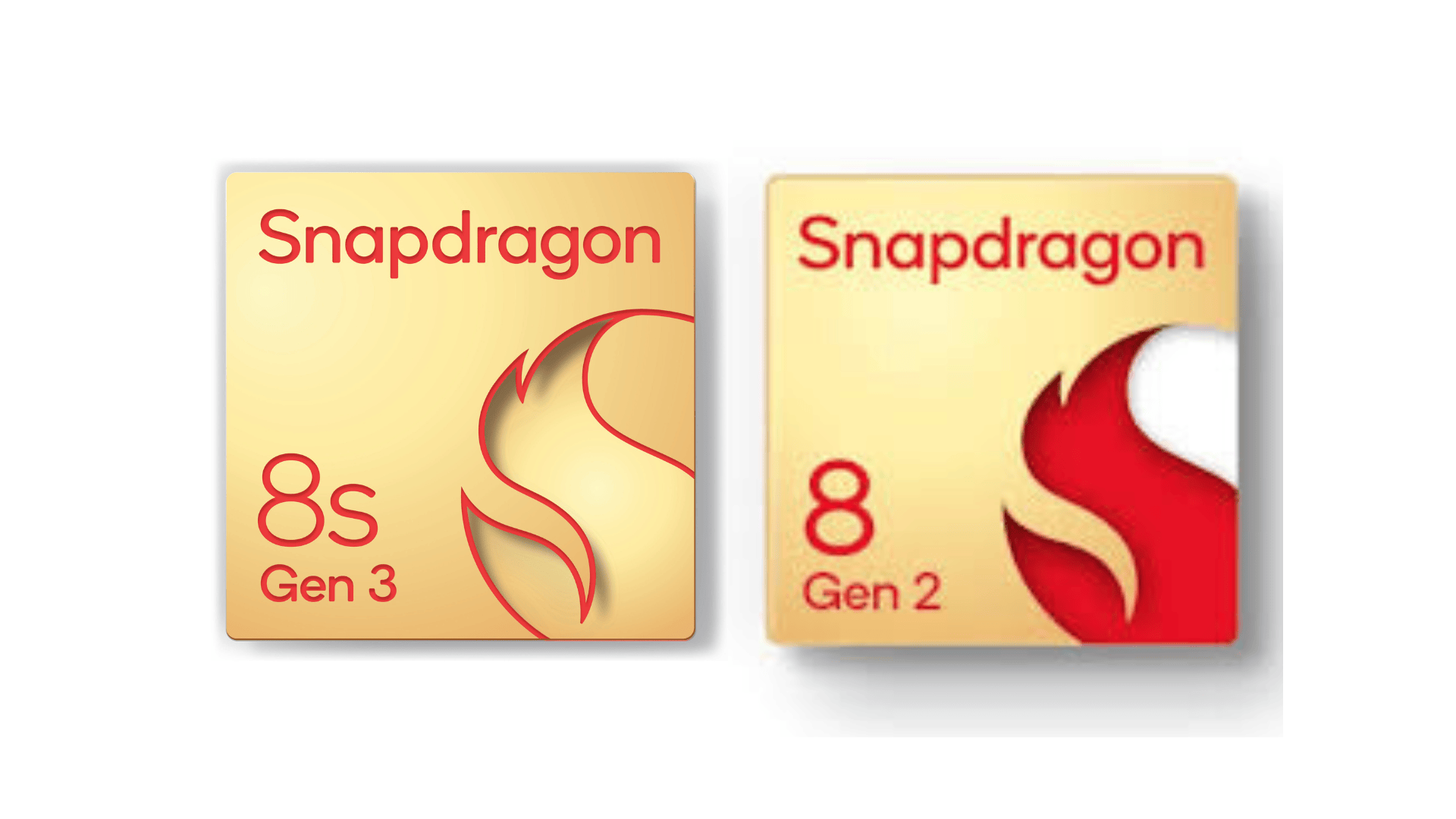Smartphone processors are what make our phones fast, powerful, and efficient. Qualcomm’s Snapdragon series is known for delivering great performance, and with the new Snapdragon 8s Gen 3, many are wondering how it compares to last year’s Snapdragon 8 Gen 2. In this blog, we’ll look at how these two processors differ, helping you see which one might be the best choice for your next phone.
Table of Content
Core Specifications
Core Count and Architecture
Snapdragon 8s Gen 3
-
- Cores: 8
-
- Architecture: 1x Cortex-X4 (3.0 GHz), 4x Cortex-A720 (2.8 GHz), 3x Cortex-A520 (2.0 GHz)
Snapdragon 8 Gen 2
-
- Cores: 8
-
- Architecture: 1x Cortex-X3 (3.2 GHz), 2x Cortex-A715 (2.8 GHz), 2x Cortex-A710 (2.8 GHz), 3x Cortex-A510 (2.0 GHz)
Note: Both processors have an octa-core setup, but the Snapdragon 8 Gen 2’s prime core runs slightly faster.
Processor Speed
-
- Snapdragon 8s Gen 3: 3.0 GHz (Cortex-X4)
-
- Snapdragon 8 Gen 2: 3.2 GHz (Cortex-X3)
RAM and Storage Support
-
- Both Processors: Support LPDDR5X RAM up to 4200 MHz and UFS 4.0 storage, with a maximum RAM capacity of 24 GB.
Graphics and Video Support
GPU Performance
Snapdragon 8s Gen 3
-
- GPU: Adreno 735
-
- GPU Frequency: 1100 MHz
Snapdragon 8 Gen 2
-
- GPU: Adreno 740
-
- GPU Frequency: 680 MHz
Advantage: The Adreno 740 in the Snapdragon 8 Gen 2 has more shading units and superior performance metrics, making it ideal for high-end gaming and graphics tasks.
Video Capture Capabilities
-
- Snapdragon 8s Gen 3: Supports up to 200 MP photo capture and 4K HDR video at 60 FPS.
-
- Snapdragon 8 Gen 2: Supports up to 108 MP photo capture with similar 4K HDR video capabilities.
Network and Connectivity
Network Speed
Snapdragon 8s Gen 3
-
- Modem: Snapdragon X70 5G
-
- Peak Download Speed: 6.5 Gbps
Snapdragon 8 Gen 2
-
- Modem: Snapdragon X70 5G
-
- Peak Download Speed: 10 Gbps
Note: The Snapdragon 8 Gen 2 offers higher peak download speeds, which enhances performance for data-intensive applications.
Benchmark Scores
AnTuTu Benchmark Score
-
- Snapdragon 8s Gen 3: Around 1,000,000 (varies by device)
-
- Snapdragon 8 Gen 2: Approximately 1,200,000
Geekbench Scores
-
- Snapdragon 8s Gen 3: Single-core ~1,800, Multi-core ~5,500
-
- Snapdragon 8 Gen 2: Single-core ~1,900, Multi-core ~5,600
Advantage: The Snapdragon 8 Gen 2 slightly outperforms the 8s Gen 3 in both single-core and multi-core benchmarks.
Summary
-
- Snapdragon 8s Gen 3: Ideal for users prioritizing efficiency and thermal management, thanks to its newer architecture.
-
- Snapdragon 8 Gen 2: Best for those who need raw performance, especially in gaming and graphics-intensive tasks.
Choose the Snapdragon 8 Gen 2 for high-performance needs and the Snapdragon 8s Gen 3 for better battery life and thermal efficiency.
FAQs About Snapdragon 8s Gen 3 vs Snapdragon 8 Gen 2
What are the main differences between the Snapdragon 8s Gen 3 and Snapdragon 8 Gen 2?
The 8 Gen 2 has a faster CPU and better performance in benchmarks. The 8s Gen 3 has a faster GPU and newer Bluetooth, with potential for better efficiency due to its lower TDP.
Which processor is better for gaming?
The 8 Gen 2 is better for gaming, thanks to its more powerful GPU and higher FLOPS, making it smoother for graphics-heavy games.
Which processor has better battery life?
Both have similar battery life, but the 8s Gen 3 may be more efficient due to its newer architecture and lower TDP.
What are the connectivity differences?
Both use the Snapdragon X70 modem, but the 8 Gen 2 supports faster download speeds, while the 8s Gen 3 has newer Bluetooth technology.
Which processor is better overall?
The 8 Gen 2 is better for performance, especially in gaming, while the 8s Gen 3 offers newer tech and better efficiency. Choose based on your priorities.

Leave a Reply